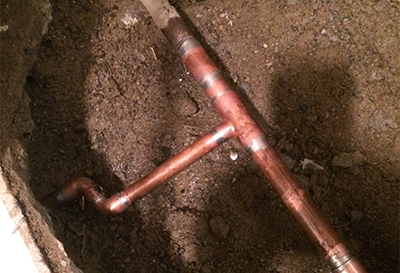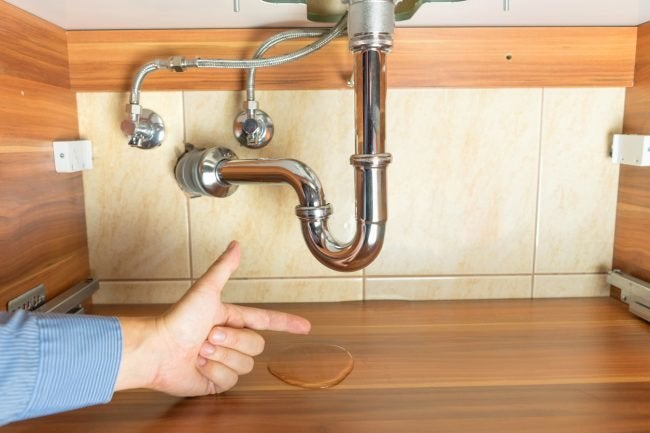How to Check If Your Home Has a Hidden Leakage
How to Check If Your Home Has a Hidden Leakage
Blog Article
They are making a number of good points related to Finding hidden leaks as a whole in the content which follows.

Early detection of leaking water lines can reduce a prospective calamity. Some little water leakages might not be visible.
1. Examine the Water Meter
Every home has a water meter. Inspecting it is a guaranteed manner in which aids you uncover leakages. For beginners, switch off all the water resources. Make certain no person will certainly purge, make use of the faucet, shower, run the washing machine or dishwasher. From there, go to the meter and watch if it will change. Since no one is utilizing it, there should be no movements. If it moves, that shows a fast-moving leakage. Also, if you discover no changes, wait an hour or more and check back again. This means you might have a sluggish leak that could also be below ground.
2. Check Water Intake
Examine your water bills as well as track your water consumption. As the one paying it, you need to see if there are any inconsistencies. If you identify sudden changes, despite your intake being the same, it indicates that you have leaks in your plumbing system. Keep in mind, your water bill should drop under the very same array each month. An unexpected spike in your expense indicates a fast-moving leak.
Meanwhile, a constant increase on a monthly basis, despite the same routines, shows you have a slow leak that's additionally slowly rising. Call a plumber to thoroughly inspect your residential or commercial property, specifically if you feel a warm location on your floor with piping beneath.
3. Do a Food Coloring Examination
When it concerns water usage, 30% originates from toilets. Examination to see if they are running effectively. Drop specks of food shade in the tank as well as wait 10 mins. There's a leakage in between the container as well as bowl if the shade in some way infiltrates your dish throughout that time without flushing.
4. Asses Exterior Lines
Do not fail to remember to inspect your outside water lines too. Needs to water permeate out of the connection, you have a loose rubber gasket. One little leakage can squander loads of water and also increase your water costs.
5. Evaluate the situation and examine
Property owners ought to make it a habit to examine under the sink counters as well as even inside closets for any type of bad odor or mold development. These two warnings suggest a leakage so timely attention is called for. Doing routine examinations, even bi-annually, can save you from a significant problem.
Inspect for stainings and also damaging as many pipes as well as devices have a life span. If you presume dripping water lines in your plumbing system, do not wait for it to rise.
Early discovery of dripping water lines can mitigate a potential catastrophe. Some small water leaks may not be visible. Inspecting it is a guaranteed method that assists you uncover leakages. One small leakage can lose bunches of water and spike your water bill.
If you suspect leaking water lines in your plumbing system, do not wait for it to rise.
How to Know If Your Home Has a Hidden Leak
Water Meter Reveals Inexplicable Water Usage
If you’d like to test whether or not there’s a leak somewhere in your home, you can do this using your water meter. Here is how to conduct the test:
Don’t use any water in your home for at least 30 minutes; this also means not turning on faucets or water-using appliances.
Go outside, and check your water meter for activity.
If your water meter shows that there was activity, even though no one was using any water, this proves that there is a leak in your home.Visible Mold or Mildew Growth
Leaks behind walls create moist, dark environments that allow mold and mildew to grow and thrive. Eventually, you might see mold growth forming on the wall closest to a hidden leak.
If mold is growing in an area that receives a high amount of moisture, such as a bathroom, it may simply be an indication that better ventilation is needed. However, if you see mold growth on a wall or the ceiling in an area where you would not expect, you probably have a hidden leak.
Musty, Mildew Odor
Sometimes you might not be able to see the mold or mildew that is growing as a result of a leak. However, the smell can give the problem away just as easily. If you catch a whiff of something musty, there’s a good chance that old water is collecting somewhere in your home that you can’t see.
Stained/Warped Walls, Ceilings, or Floors
When your home soaks up water, a variety of red flags can become visible, including ceiling stains, bubbling drywall, warped walls, and sagging floors. While these issues can be caused by excess humidity, they can also be signs that a pipe or plumbing connection has started leaking behind your walls.
Inexplicably High Water Bill
After a while, you get a general sense for what your water bill should be. If you own a pool or sprinkler system, your bill will tend to be higher during summer. However, if you receive a water bill that seems especially high, and you can’t figure out what caused it, then you may have a hidden leak somewhere that’s increasing your bill.
https://www.plumbingjoint.com/blog/2019/july/how-to-know-if-your-home-has-a-hidden-leak/

I discovered that piece of writing about Hacks to detect leaks while doing a search on the search engines. Loved our write-up? Please share it. Help somebody else locate it. Thanks a lot for your time. Come back soon.
Report this page